The Evolution of Sustainable Development Theory: Types, Goals, and Research Prospects
Abstract
1. Introduction
2. Status of SD Research
3. The Evolution Process of SD Theory
3.1. The Embryonic Period (Before 1972)
3.2. The Molding Period (1972–1987)
3.2.1. The United Nations Conference on the Human Environment in 1972
3.2.2. Publication of “Our Common Future” in 1987
3.3. The Developing Period (1987–Present)
3.3.1. The 1992 United Nations Conference on Environment and Development
3.3.2. The United Nations Millennium Summit in 2000
3.3.3. From SD to Sustainability Science
3.3.4. The 2012 United Nations Conference on SD
3.3.5. United Nations Sustainable Development Summit
4. Types of SD
4.1. Weak Sustainability
4.2. Strong Sustainability
4.3. Absurdly Strong Sustainability
4.4. Comparisons Among Weak, Strong, and Absurdly Strong Sustainability
5. Goals of SD
5.1. Single-Factor Development Goals
5.2. Millennium Development Goals (MDGs)
5.3. Sustainable Development Goals (SDGs)
6. Prospects of SD Research
6.1. Weak Sustainability Remains
6.2. Inter-Generational Equity in SD
6.3. The Cultural Dimension of SD
6.4. Cooperative Governance for SD
6.5. Global Life-Supporting System
7. Conclusions
Author Contributions
Funding
Conflicts of Interest
References
- Zhou, H. The simple thought of sustainable development and practice in ancient China. Li Lun Dao Bao 2009, 12, 39–44. [Google Scholar]
- Kates, R.W.; Parris, T.M. Long-term trends and a sustainability transition. Proc. Natl. Acad. Sci. USA 2003, 100, 8062–8067. [Google Scholar] [CrossRef]
- Du Pisani, J.A. Sustainable development-historical roots of the concept. Environ. Sci. 2006, 3, 83–96. [Google Scholar] [CrossRef]
- Wang, S.; Miao, Z. Connotation of the principle of environmental protection first. J. China Univ. Min. Technol. Sci. 2018, 20, 26–41. [Google Scholar]
- Nemery, B.; Hoet, P.H.M.; Nemmar, A. Department of medical history The Meuse Valley fog of 1930: An air pollution disaster. Lancet 2001, 357, 704–708. [Google Scholar] [CrossRef]
- Jacobs, E.T.; Burgess, J.L.; Abbott, M.B. The Donora Smog Revisited: 70 Years After the Event That Inspired the Clean Air Act. Am. J. Public Health 2018, 108, S85–S88. [Google Scholar] [CrossRef]
- Bell, M.L.; Davis, D.L.; Fletcher, T. A retrospective assessment of mortality from the london smog episode of 1952: The role of influenza and pollution. Urban Ecol. Int. Perspect. Interact. Between Hum. Nat. 2008, 6, 263–268. [Google Scholar]
- Lyons, R.A.; Rodgers, S.E.; Thomas, S.; Bailey, R.; Brunt, H.; Thayer, D.; Bidmead, J.; Evans, B.A.; Harold, P.; Hooper, M.; et al. Effects of an air pollution personal alert system on health service usage in a high-risk general population: A quasi-experimental study using linked data. J. Epidemiol. Community Health 2016, 70, 1184–1190. [Google Scholar] [CrossRef]
- Zhao, J. The theoretical analysis of sustainable development. Ecol. Econ. 1991, 12–15. [Google Scholar]
- Klarin, T. The Concept of Sustainable Development: From its Beginning to the Contemporary Issues. Zagreb Int. Rev. Econ. Bus. 2018, 21, 67–94. [Google Scholar] [CrossRef]
- Baumgartner, R.J. Critical perspectives of sustainable development research and practice. J. Clean. Prod. 2011, 19, 783–786. [Google Scholar] [CrossRef]
- Niu, W.; Ma, N.; Yijun, L. Sustainable development from action to science—Sustainability science and the annual report for world sustainable development 2015. Bull. Chin. Acad. Sci. 2015, 30, 573–585. [Google Scholar]
- Broman, G.I.; Robert, K.-H. A framework for strategic sustainable development. J. Clean. Prod. 2017, 140, 17–31. [Google Scholar] [CrossRef]
- Mebratu, D. Sustainability and sustainable development: Historical and conceptual review. Environ. Impact Assess. Rev. 1998, 18, 493–520. [Google Scholar] [CrossRef]
- Zhao, J.; Liang, X.; Zhang, X. System analysis on the definition of sustainable development. Acta Ecol. Sin. 1999, 19, 393–398. [Google Scholar]
- Kates, R.W.; Parris, T.M.; Leiserowitz, A.A. What is sustainable development? Goals, indicators, values, and practice. Environ. Sci. Policy Sustain. Dev. 2005, 47, 8–21. [Google Scholar]
- Lele, S.M. Sustainable development: A critical review. World Dev. 1991, 19, 607–621. [Google Scholar] [CrossRef]
- Lin, Y.; Zhang, X.; Geertman, S. Toward smart governance and social sustainability for Chinese migrant communities. J. Clean. Prod. 2015, 107, 389–399. [Google Scholar] [CrossRef]
- Yang, B.; Xu, T.; Shi, L. Analysis on sustainable urban development levels and trends in China’s cities. J. Clean. Prod. 2017, 141, 868–880. [Google Scholar] [CrossRef]
- Hedenus, F.; Martin, P.; Sprei, F. Sustainable Development: Nuances and Perspectives; Studentlitteratur AB: Lund, Sweden, 2018; ISBN 9789144129068. [Google Scholar]
- Niu, W. Theory and practice of China’s sustainable development. Bull. Chin. Acad. Sci. 2012, 27, 280–289. [Google Scholar]
- Steer, A.; Wade-Gery, W. Sustainable development: Theory and practice for a sustainable future. Sustain. Dev. 1993, 1, 23–35. [Google Scholar] [CrossRef]
- Beggs, J. Positive Versus Normative Analysis in Economics. Available online: Thoughtco.com/positive-versus-normative-analysis-1147005 (accessed on 6 November 2019).
- Wichaisri, S.; Sopadang, A. Trends and future directions in sustainable development. Sustain. Dev. 2018, 26, 1–17. [Google Scholar] [CrossRef]
- Zhu, J.; Hua, W. Visualizing the knowledge domain of sustainable development research between 1987 and 2015: A bibliometric analysis. Scientometrics 2017, 110, 893–914. [Google Scholar] [CrossRef]
- Bettencourt, L.M.; Kaur, J. Evolution and structure of sustainability science. Proc. Natl. Acad. Sci. USA 2011, 108, 19540–19545. [Google Scholar] [CrossRef]
- Deng, B. Four main differences in sustainable development research. North. Econ. 2007, 52–53. [Google Scholar]
- Stagl, S. Theoretical foundations of learning processes for sustainable development. Int. J. Sustain. Dev. World Ecol. 2007, 14, 52–62. [Google Scholar] [CrossRef]
- Olawumi, T.O.; Chan, D.W.M. A scientometric review of global research on sustainability and sustainable development. J. Clean. Prod. 2018, 183, 231–250. [Google Scholar] [CrossRef]
- Zhang, X. Theory of sustainable development: Concept evolution, dimension and prospect. Bull. Chin. Acad. Sci. 2018, 33, 10–19. [Google Scholar]
- Wu, J.; Guo, X.; Yang, J.; Qian, G.; Niu, J.; Liang, C.; Zhang, Q.; Li, A. What is sustainability science? Chin. J. Appl. Ecol. 2014, 25, 1–11. [Google Scholar]
- Varro, T. Marcus Porcius Cato on Agriculture; Marcus Terentius Varro on Agriculture; Revised ed.; Harvard University Press: Cambridge, MA, USA, 1954. [Google Scholar]
- Von Carlowitz, H.C. Encyclopedia of Public Health; Kirch, W., Ed.; Springer: Dordrecht, The Netherlands, 2008; p. 99. ISBN 978-1-4020-5614-7. [Google Scholar]
- Sun, X. Review and prospect on the UN’s efforts for sustainable development. China Popul. Environ. 2012, 22, 1–6. [Google Scholar]
- World Commission on Environment and Development. Our Common Future; Oxford University Press: Oxford, UK, 1987. [Google Scholar]
- Hu, D.; Deng, M. A review of sustainable development theory and sustainable development of hospitals. Chin. Hosp. Manag. 2004, 24, 42–45. [Google Scholar]
- Niu, W. Introduction to Scientific Development; Science Press: Beijing, China, 1994. [Google Scholar]
- Qiu, X. United Nations Conference on environment and development held. World Environ. 1992, 2. [Google Scholar]
- Li, C. United Nations summit seeks global development. Contemp. World 2005, 4–6. [Google Scholar] [CrossRef]
- Anderies, J.M.; Rodriguez, A.A.; Janssen, M.A.; Cifdaloz, O. Panaceas, uncertainty, and the robust control framework in sustainability science. Proc. Natl. Acad. Sci. USA 2007, 104, 15194–15199. [Google Scholar] [CrossRef]
- Fang, X.; Zhou, B.; Tu, X.; Ma, Q.; Wu, J. What Kind of a Science is Sustainability Science? An Evidence-Based Reexamination. Sustainability 2018, 10, 1478. [Google Scholar] [CrossRef]
- Zhou, B.; Ma, Q.; Wu, J.; Hu, G.; Mao, D.; Zeng, X.; Guo, J.; Fang, X.; Liu, Y.; Lyu, L. Sustainability science revisited: Recent advances and new opportunities. Chinese J. Appl. Ecol. 2019, 30, 325–336. [Google Scholar]
- Kajikawa, Y.; Ohno, J.; Takeda, Y.; Matsushima, K.; Komiyama, H. Creating an academic landscape of sustainability science: An analysis of the citation network. Sustain. Sci. 2007, 2, 221–231. [Google Scholar] [CrossRef]
- United Nations. The Future we Want; United Nations: New York, NY, USA, 2012. [Google Scholar]
- Barbier, E.B. The green economy post Rio+20. Science. 2012, 338, 887–888. [Google Scholar] [CrossRef]
- Zhu, D. Sustainability science: An object-process-subject analytical framework. China Popul. Environ. 2016, 26, 1–9. [Google Scholar]
- United Nations. Transforming Our World: The 2030 Agenda for Sustainable Development; United Nations: New York, NY, USA, 2015; ISBN 9780826190123. [Google Scholar]
- Ekins, P.; Dresner, S.; Dahlström, K. The four-capital method of sustainable development evaluation. Eur. Environ. 2008, 18, 63–80. [Google Scholar] [CrossRef]
- Williams, C.C.; Millington, A.C. The diverse and contested meanings of sustainable development. Geogr. J. 2004, 170, 99–104. [Google Scholar] [CrossRef]
- Wilson, M.C.; Wu, J. The problems of weak sustainability and associated indicators. Int. J. Sustain. Dev. World Ecol. 2017, 24, 44–51. [Google Scholar] [CrossRef]
- Molotch, H.; Daly, H.E. Beyond Growth: The Economics of Sustainable Development. Contemp. Sociol. 1998, 27, 254. [Google Scholar] [CrossRef]
- Liobikiene, G.; Balezentis, T.; Streimikiene, D.; Chen, X. Evaluation of bioeconomy in the context of strong sustainability. Sustain. Dev. 2019, 27, 955–964. [Google Scholar] [CrossRef]
- Wu, J. Landscape sustainability science: Ecosystem services and human well-being in changing landscapes. Landsc. Ecol. 2013, 28, 999–1023. [Google Scholar] [CrossRef]
- Daly, H.E. On Wilfred Beckerman’s Critique of Sustainable Development. Environ. Values 1995, 4, 49–55. [Google Scholar] [CrossRef]
- Nasrollahi, Z.; Hashemi, M.; Bameri, S.; Mohamad Taghvaee, V. Environmental pollution, economic growth, population, industrialization, and technology in weak and strong sustainability: Using STIRPAT model. Environ. Dev. Sustain. 2018, 1–18. [Google Scholar] [CrossRef]
- Jabareen, Y. A knowledge map for describing variegated and conflict domains of sustainable development. J. Environ. Plan. Manag. 2004, 47, 623–642. [Google Scholar] [CrossRef]
- Jabareen, Y. A New Conceptual Framework for Sustainable Development. Environ. Dev. Sustain. 2006, 10, 179–192. [Google Scholar] [CrossRef]
- IUCN. World Conservation Strategy: Living Resource Conservation for Sustainable Development; IUCN: Gland, Switzerland, 1980. [Google Scholar]
- International Institute for Sustainable Development. The International Institute for Sustainable Development Sustainable Development Timeline; International Institute for Sustainable Development: Vinipeg, MB, Canada, 2012. [Google Scholar]
- The World Bank Group. Environmental Sustainability: An Evaluation of World Bank Group Support; The World Bank Group: Washington, DC, USA, 2008; ISBN 9780821376706. [Google Scholar]
- Gandhi, V.P. The IMF and the Environment. Available online: https://www.imf.org/external/pubs/ft/exrp/environ/ (accessed on 6 November 2019).
- MA, B. Millennium Ecosystem Assessment; New Island: Washington, DC, USA, 2005. [Google Scholar]
- Asadullah, M.N.; Savoia, A. Poverty reduction during 1990–2013: Did Millennium Development Goals adoption and state capacity matter? World Dev. 2018, 105, 70–82. [Google Scholar] [CrossRef]
- United Nations. Development Programme. In Governance for Sustainable Development; United Nations: New York, NY, USA, 2014. [Google Scholar]
- Henry, A.D.; Vollan, B. Networks and the Challenge of Sustainable Development. Annu. Rev. Environ. Resour. 2014, 39, 583–610. [Google Scholar] [CrossRef]
- Peng, G. Promoting One Belt And One Road under the sustainable development goals. Reg. Econ. Rev. 2017, 2–5. [Google Scholar] [CrossRef]
- Gusmao Caiado, R.G.; Leal Filho, W.; Goncalves Quelhas, O.L.; de Mattos Nascimento, D.L.; Avila, L.V. A literature-based review on potentials and constraints in the implementation of the sustainable development goals. J. Clean. Prod. 2018, 198, 1276–1288. [Google Scholar] [CrossRef]
- United Nations. The Millennium Development Goals Report 2015; United Nations: New York, NY, USA, 2015; ISBN 978-92-1-101320-7. [Google Scholar]
- Rudra, S.; Kurian, O.C. Progress Tracking of Health-Related SDGs: Challenges and Opportunities for India. Asian J. Public Aff. 2018, 10, 24–52. [Google Scholar] [CrossRef]
- Muff, K.; Kapalka, A.; Dyllick, T. The Gap Frame—Translating the SDGs into relevant national grand challenges for strategic business opportunities. Int. J. Manag. Educ. 2017, 15, 363–383. [Google Scholar] [CrossRef]
- Lu, Y.; Nakicenovic, N.; Visbeck, M.; Stevance, A.-S. Policy: Five priorities for the UN sustainable development goals. Nat. News 2015, 520, 432. [Google Scholar] [CrossRef]
- Zhang, J.; Wang, S.; Zhao, W.; Liu, Y.; Fu, B. Research progress on the interlinkages between the 17 Sustainable Development Goals and their implication for domestic study. Acta Ecol. Sin. 2019, 39, 1–11. [Google Scholar]
- Leal Filho, W.; Azeiteiro, U.; Alves, F.; Pace, P.; Mifsud, M.; Brandli, L.; Caeiro, S.S.; Disterheft, A. Reinvigorating the sustainable development research agenda: The role of the sustainable development goals (SDG). Int. J. Sustain. Dev. World Ecol. 2018, 25, 131–142. [Google Scholar] [CrossRef]
- Stafford-Smith, M.; Griggs, D.; Gaffney, O.; Ullah, F.; Reyers, B.; Kanie, N.; Stigson, B.; Shrivastava, P.; Leach, M.; O’Connell, D. Integration: The key to implementing the Sustainable Development Goals. Sustain. Sci. 2017, 12, 911–919. [Google Scholar] [CrossRef]
- Biermann, F.; Stevens, C.; Bernstein, S.; Gupta, A.; Kabiri, N.; Kanie, N.; Levy, M.; Nilsson, M.; Pintér, L.; Scobie, M.; et al. Integrating Governance into the Sustainable Development Goals. Policy Brief 2014, 4. [Google Scholar]
- Mori, K. Global Justice in the Anthropocene: The Fourth Pillar Debate in Sustainable Development. J. Soc. Sci. 2014, 101–122. [Google Scholar]
- United Cities and Local Governments. Culture:Fourth Pillar of Sustainable Development. Mexico, 2010. Available online: http://www.agenda21culture.net/sites/default/files/files/documents/en/zz_culture4pillarsd_eng.pdf (accessed on 13 December 2019).
- Tian, D. An analysis on the value of sustainable development education. Educ. Res. 2013, 25–29. [Google Scholar]
- Li, Z. Weak or strong sustainab-exploring the eco-limits of development—Discussing from the eco-limits of natural resources conswmption. China Popul. Environ. 2003, 13, 1–4. [Google Scholar]
- Anielski, M.; Rowe, J. The Genuine Progress Indicator—1998 Update. Redifining Prog. Updat. 1999, 67. [Google Scholar]
- Boos, A.; Holm-Müller, K. The Zambian Resource Curse and its influence on Genuine Savings as an indicator for weak sustainable development. Environ. Dev. Sustain. 2015, 18, 881–919. [Google Scholar] [CrossRef]
- Fletcher, R.; Rammelt, C. Decoupling: A Key Fantasy of the Post-2015 Sustainable Development Agenda. Globalizations 2017, 14, 450–467. [Google Scholar] [CrossRef]
- Ward, J.D.; Sutton, P.C.; Werner, A.D.; Costanza, R.; Mohr, S.H.; Simmons, C.T. Is decoupling GDP growth from environmental impact possible? PLoS ONE 2016, 11, 1–14. [Google Scholar] [CrossRef]
- Hickel, J. Is it possible to achieve a good life for all within planetary boundaries? Third World Q. 2019, 40, 18–35. [Google Scholar] [CrossRef]
- Güney, T. Renewable energy, non-renewable energy and sustainable development. Int. J. Sustain. Dev. World Ecol. 2019, 26, 389–397. [Google Scholar] [CrossRef]
- Barbier, E.B. Is green growth relevant for poor economies? Resour. Energy Econ. 2016, 45, 178–191. [Google Scholar] [CrossRef]
- Bergmann, I.M. Interspecies Sustainability to Ensure Animal Protection: Lessons from the Thoroughbred Racing Industry. Sustainability 2019, 11, 5539. [Google Scholar] [CrossRef]
- Oliveira, R.V. Back to the future: The potential of intergenerational justice for the achievement of the Sustainable Development Goals. Sustainability 2018, 10, 427. [Google Scholar] [CrossRef]
- UNESCO. Universal Declaration on Culture Diversity. Paris, 2001. Available online: http://www.unesco.org/new/fileadmin/MULTIMEDIA/HQ/CLT/pdf/5_Cultural_Diversity_EN.pdf (accessed on 13 December 2019).
- Culture in Rio+20. Available online: http://www.unesco.org/new/en/culture/themes/culture-and-development/the-future-we-want-the-role-of-culture/culture-in-rio-20/ (accessed on 2 November 2019).
- Meng, Z. Cultural ideas and regional sustainable development. Hum. Geogr. 2002, 17, 74–77. [Google Scholar]
- Miltojević, V.; Ilić-Krstić, I. Cultural Dimension of Sustainable Development as a Presumtion of Local Communities Development. Qual. Life 2011, 3, 33–37. [Google Scholar] [CrossRef][Green Version]
- Kemp, R.; Parto, S.; Gibson, R.B. Governance for sustainable development: Moving from theory to practice. Int. J. Sustain. Dev. 2005, 8, 12–30. [Google Scholar] [CrossRef]
- Güney, T. Governance and sustainable development: How effective is governance? J. Int. Trade Econ. Dev. 2017, 26, 316–335. [Google Scholar] [CrossRef]
- Demmers, J.; Jilberto, A.E.F.; Hogenboom, B. Good Governance and democracy in a world of neoliberal regimes. In Good Governance in the Era of Global Neoliberalism; Routledge: London, UK, 2004; pp. 1–37. [Google Scholar]
- Stojanović, I.; Ateljević, J.; Stević, R.S. Good Governance As a Tool of Sustainable Development. Eur. J. Sustain. Dev. 2016, 5, 558–573. [Google Scholar] [CrossRef]
- Meyer, N. Good Urban Governance and City Resilience: An Afrocentric Approach to Sustainable Development. Sustainability 2019, 11, 5514. [Google Scholar] [CrossRef]
- Stevens, C. Scales of integration for sustainable development governance. Int. J. Sustain. Dev. World Ecol. 2018, 25, 1–8. [Google Scholar] [CrossRef]
- Griggs, D.; Smith, M.S.; Rockström, J.; Öhman, M.C.; Gaffney, O.; Glaser, G.; Kanie, N.; Noble, I.; Steffen, W.; Shyamsundar, P. An integrated framework for sustainable development goals. Ecol. Soc. 2014, 19, 49. [Google Scholar] [CrossRef]
- Steffen, W.; Persson, Å.; Deutsch, L.; Zalasiewicz, J.; Williams, M.; Richardson, K.; Crumley, C.; Crutzen, P.; Folke, C.; Gordon, L.; et al. The anthropocene: From global change to planetary stewardship. Ambio 2011, 40, 739–761. [Google Scholar] [CrossRef] [PubMed]
- Rockström, J.; Steffen, W.; Noone, K.; Persson, Å.; Chapin III, F.S.; Lambin, E.F.; Lenton, T.M.; Scheffer, M.; Folke, C.; Schellnhuber, H.J. A safe operating space for humanity. Nature 2009, 461, 472. [Google Scholar] [CrossRef] [PubMed]
- Hooke, R.L.; Martín-Duque, J.F.; Pedraza, J. Land transformation by humans: A review Roger. GSA Today 2012, 22, 4–10. [Google Scholar] [CrossRef]
- Watts, P.; Custer, B.; Yi, Z.F.; Ontiri, E.; Pajaro, M. A Yin-Yang approach to education policy regarding health and the environment: Early-careerists’ image of the future and priority programmes. Nat. Resour. Forum 2015, 39, 202–213. [Google Scholar] [CrossRef]
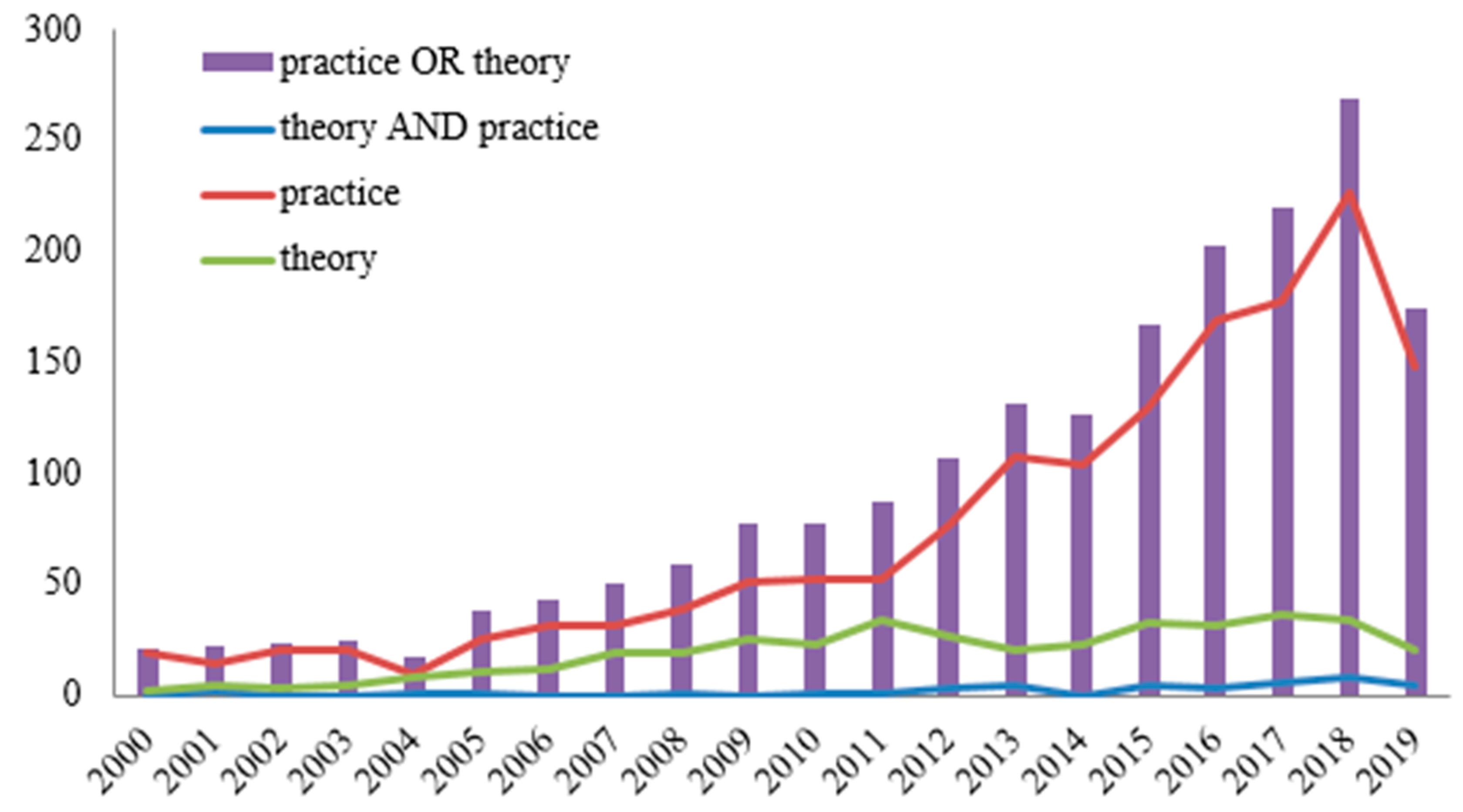
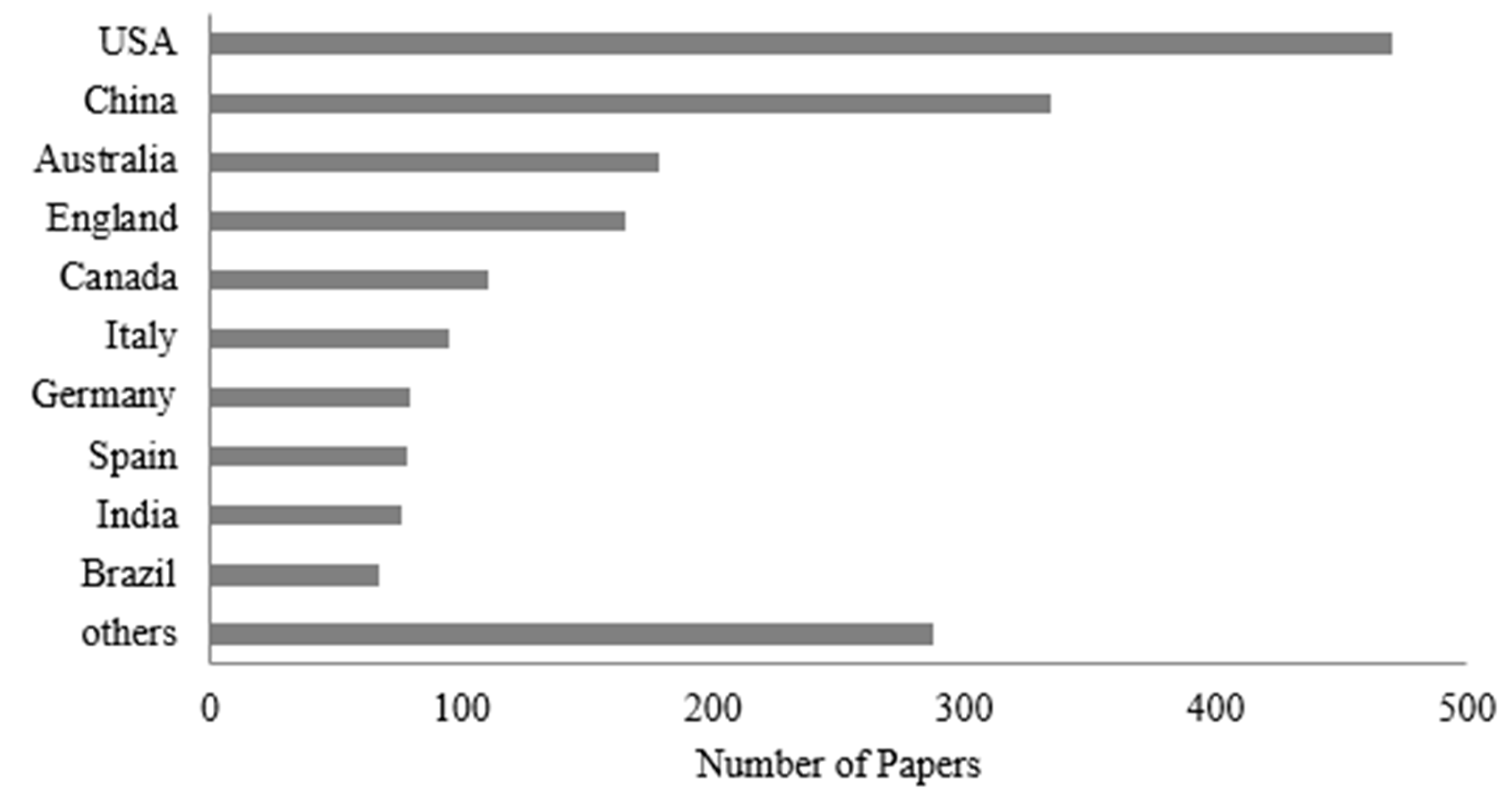
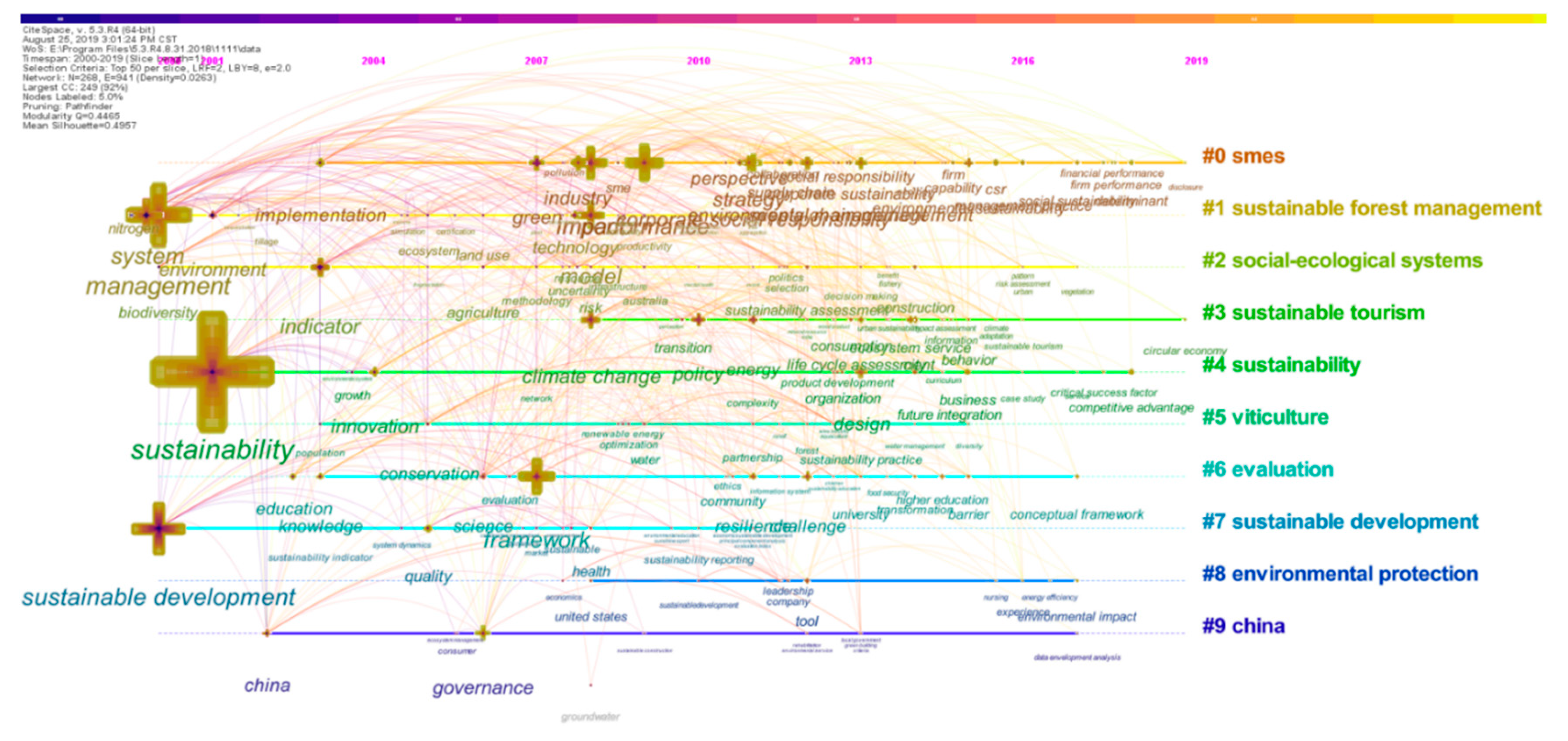
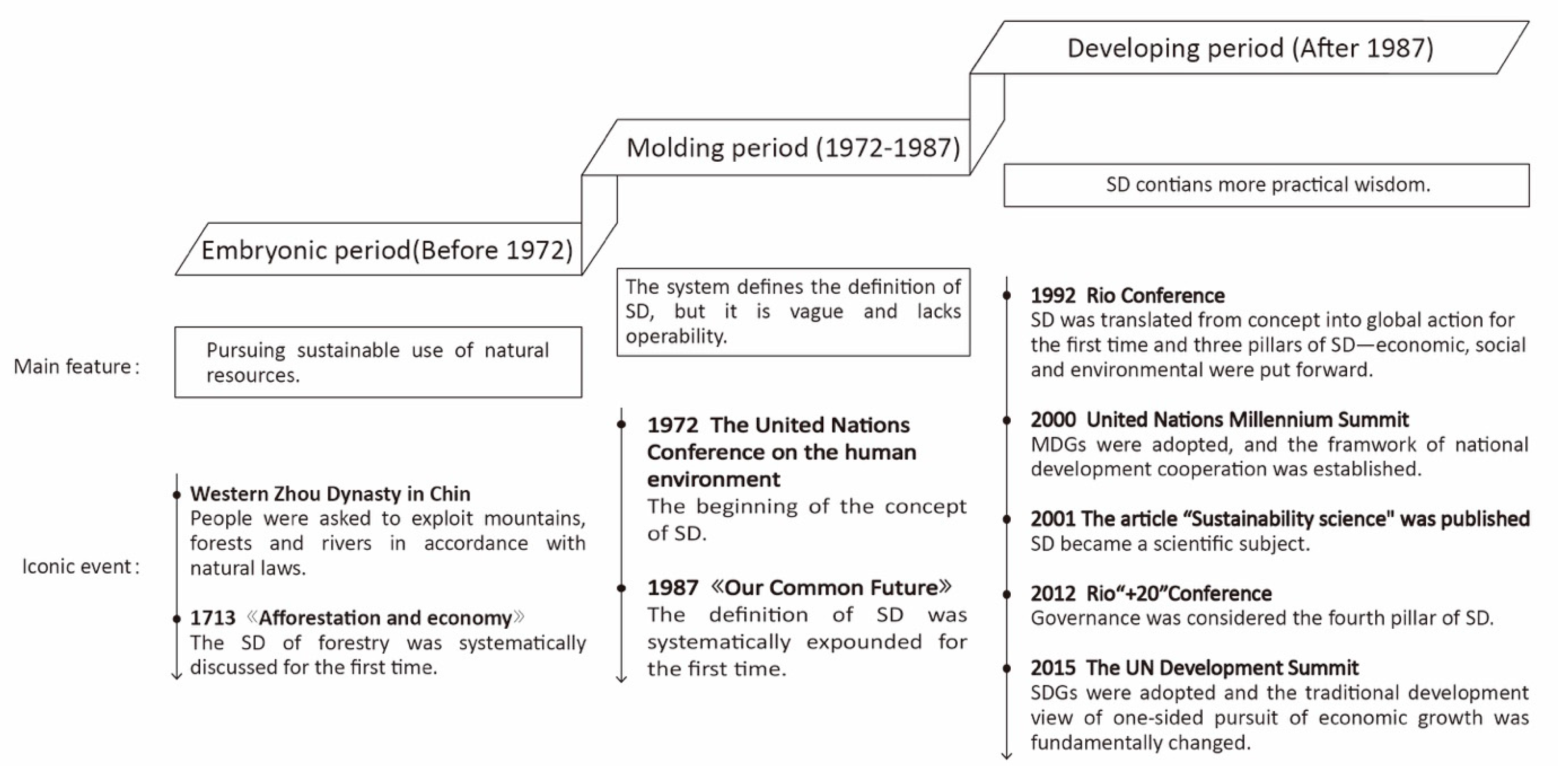
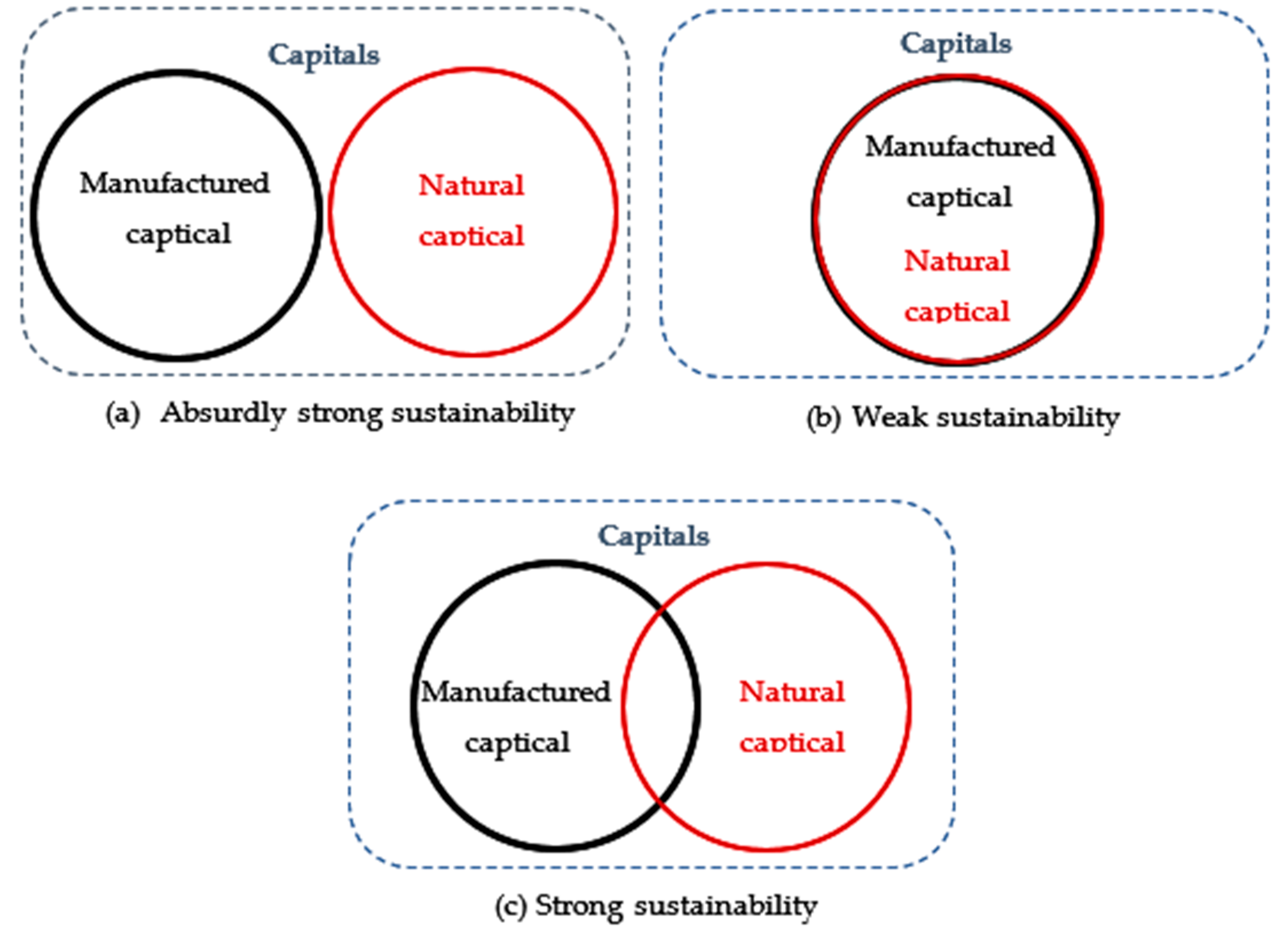
© 2019 by the authors. Licensee MDPI, Basel, Switzerland. This article is an open access article distributed under the terms and conditions of the Creative Commons Attribution (CC BY) license (http://creativecommons.org/licenses/by/4.0/).
Share and Cite
Shi, L.; Han, L.; Yang, F.; Gao, L. The Evolution of Sustainable Development Theory: Types, Goals, and Research Prospects. Sustainability 2019, 11, 7158. https://doi.org/10.3390/su11247158
Shi L, Han L, Yang F, Gao L. The Evolution of Sustainable Development Theory: Types, Goals, and Research Prospects. Sustainability. 2019; 11(24):7158. https://doi.org/10.3390/su11247158
Chicago/Turabian StyleShi, Longyu, Linwei Han, Fengmei Yang, and Lijie Gao. 2019. "The Evolution of Sustainable Development Theory: Types, Goals, and Research Prospects" Sustainability 11, no. 24: 7158. https://doi.org/10.3390/su11247158
APA StyleShi, L., Han, L., Yang, F., & Gao, L. (2019). The Evolution of Sustainable Development Theory: Types, Goals, and Research Prospects. Sustainability, 11(24), 7158. https://doi.org/10.3390/su11247158




